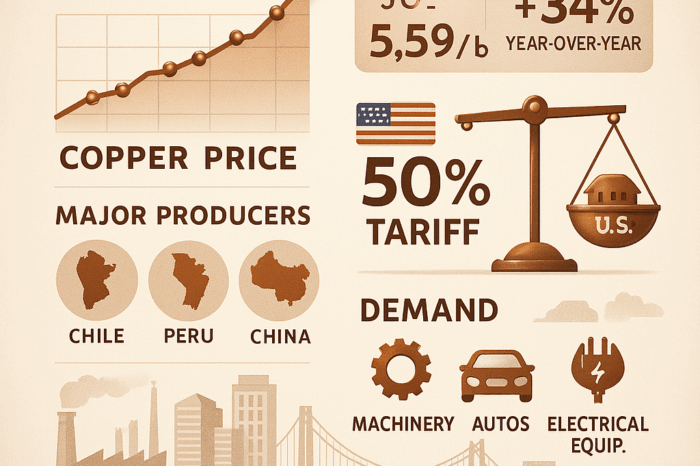Will oil, copper and the US dollar impact your business?
 Over the past few weeks I’ve been meeting and talking with distributor clients and inevitably the conversation turns to macro-economic topics starting with oil.
Over the past few weeks I’ve been meeting and talking with distributor clients and inevitably the conversation turns to macro-economic topics starting with oil.
Now mind you, this isn’t meant as alarmist or negative as, depending upon the geographic area, economies are strong and there are significant opportunities for growth. But being aware of macro-economic impacts on your business is just being practical so that you can adjust as needed.
Some things to think about that have occurred this fall and early winter…
- We all know that gas at the pump, and oil in general, has declined significantly. Most economic pundits discuss this as positive for consumers with reportedly “more money in consumer pockets” (a whole $600/year on average per person!). And lower fuel costs can lead to lower delivery costs for distributors … a positive. But …
- If you are in the Gulf Coast or other areas that are in oil producing, the decline in oil pricing is having an effect on future drilling … meaning less electrical sold for those needs. And if drilling is slowed, or stopped, that trickles to the commercial and residential markets in those areas. And if drilling stops, there is less demand for materials for those processes. Consider this article in the Wall Street Journal. U.S. Steel is closing, or significantly scaling back, a pipe making facility in Lorain, OH … which means no electrical materials being sold to this facility. Do you sell in these markets? Do you sell to companies that sell to oil companies? Could one of your customers be a casualty of the oil price decline?
- And speaking of oil, aside from there being over supply, economists talk that the price will increase with demand. But consider what percent of reduced demand has been caused by energy efficiency, energy conservation and regulatory initiatives. What percentage of power generation reduction is due to improvements in lighting efficiency (LEDS) and lighting controls? Or consider the increased MPG for automobiles (which are going to get more efficient) or the turn to natural case vs oil? And this is aside from increased production of oil from Canada and the U.S. Does anyone think that demand will really return to historical times?
- Oil’s decline gets exasperated by the strength of the U.S. dollar. European and Asian economies are weak. Aside from the issues that that causes, a strong U.S. dollar can hurt US OEMs who are selling into these areas. First those countries are not robust purchasers, then the dollar makes it more difficult. So, your OEM customer, if they sell into these markets, may face challenges.
- And I’ve read that commodity agriculture prices have declined for a number of commodities. How does this impact the agriculture market … from farmers to capital equipment (i.e. John Deere and Caterpillar)? Again, not to be alarmist but your salespeople should be inquiring about their customers’ business projections for the year so that you can being to see trends.
- Which brings us to copper. The price has declined significantly and the futures forecast does not show much relief. A portion of the reason is that the Chinese economy, while growing, is not robust. China utilizes 40-45% of the copper produced. Now add in the strength of the dollar. Copper pricing declines even though there is construction in areas within the U.S. Make sure you are tracking your wire / pipe sales in units as dollars will decline at this time. With declining pricing your GP$ for the same number of units declines. But your operating costs for selling that copper (storing, cutting, delivery, warehouse staff) either stays the same or has increased somewhat (think wages and healthcare as just 2 examples.) You could sell more and make less (net profit), if any. The key is ensuring that you have an appropriate product mix at your customers to maintain, or increase, your GM%. And TED recently commented on the copper issue.
Towards the end of 2014 our survey as well as Electrical Wholesaling, DISC and others predicted a good 2015 (6-9%). We’re not saying that this won’t occur, but it’s important to look at the macro-economic environment, read a little through the tea leaves and consider plans to manage your way through this to take advantage of opportunities and minimize downside risk. Low interest rates create other opportunities that can help you further diversify into growth markets, to resource your company to generate new competitive advantages and, many markets may only minimally be impacted by some of the macro-economic activity. The impacts change based upon distributor / manufacturer focus and locale (and we’ve heard of some manufacturers and distributors who are already being tentative with new hires and investments because of oil price implications.)
Here’s to hoping you can navigate the pitfalls to exceed your 2015 projections and that you are prepared with a Plan B if appropriate.
And then again, these are commodities sometimes traded on the whims of traders. Better to be prepared than to be reactive.






















